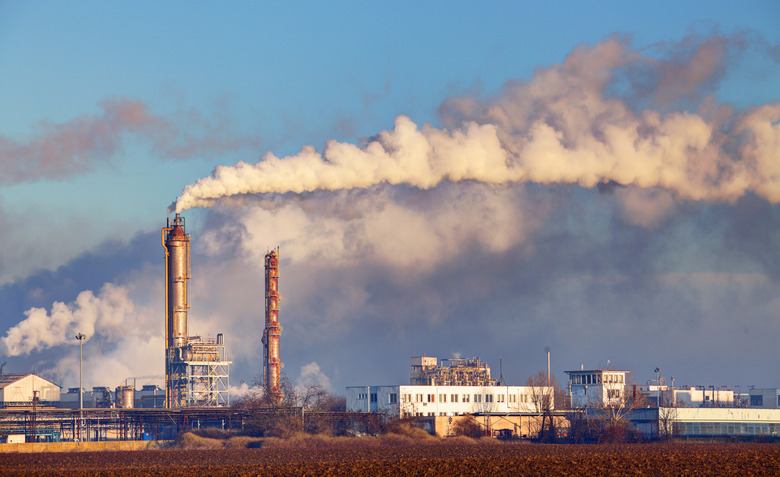The Effects Of Human Activity On The Carbon Cycle
The carbon cycle is one of several biogeochemical cycles by which the various compounds necessary for life, such as water, nitrogen, sulfur, carbon, and phosphorous, are recycled continuously through metabolic, geological, and meteorological processes. Carbon exists as carbon dioxide in the atmosphere and is dissolved in the oceans, as organic carbon in living organisms, and as part of sediment minerals like calcium carbonate. Normally, movements of carbon between these different reservoirs effectively balance out so that the amount of carbon in each is relatively constant or changes only over the course of millennia. Since the industrial revolution, however, humans have been burning fossil fuels and releasing huge amounts of carbon into the atmosphere, which may have far-reaching impacts on climate and ecosystems.
Biological Factors
Biological Factors
Carbon is one of the most important elements for life, and is, by definition, part of all organic molecules. Carbon dioxide in the atmosphere is turned into organic carbon by photosynthetic plants, algae, and phytoplankton, also known as "producers". Nearly all other organisms, including all animals, ultimately get their carbon from these producers. All organisms, producers included, release carbon dioxide as a result of cellular respiration, the process by which carbohydrates are metabolized to release the energy necessary for life. Between the effects of photosynthesis and cellular respiration, carbon cycles between the atmosphere and the biosphere. The most important exceptions are those organisms, mostly phytoplankton and other animals with shells made of calcium carbonate, which are buried under sediment at the bottom of the ocean before their carbon can be released through decomposition. This carbon is effectively removed from the biological and atmospheric parts of the carbon cycle, eventually taking the form of limestone or, under certain conditions, oil, coal, or natural gas.
Geological Factors
Geological Factors
At the same time that more limestone and carbon-containing minerals are slowly being formed, existing sediments are being slowly eroded by the forces of wind and precipitation. Limestone and other sediments are dissolved by rainwater, releasing carbon back into the biosphere. Subduction, which occurs when one tectonic plate is forced under another, is also an important part of the carbon cycle. Sediments containing carbon are pushed far enough below the surface that they melt, eventually releasing their carbon. This carbon is released suddenly, as part of volcanic eruptions, and gradually, as leaks through hot springs, fissures and vents.
Fossil Fuels
Fossil Fuels
The primary impact of humans on the carbon cycle is through the burning of fossil fuels, which releases otherwise buried carbon into the atmosphere. Fossil fuels, which include petroleum, natural gas, and coal, are used in nearly every aspect of the global economy. Automobiles are the most visible example, but more carbon dioxide is actually produced by coal and natural gas plants which produce electricity for both industrial and residential use. Industrial agriculture also runs on fossil fuel energy. All artificial fertilizers are synthesized by a process which burns fossil fuels — usually natural gas. Various studies have tracked changes in carbon dioxide over the last half century. The longest running study was begun in 1958 by Charles Keeling in Hawaii, and it shows a rapid rise in atmospheric carbon levels. Evidence from ice cores suggests that carbon levels are higher than they have been in half a million years
Deforestation
Deforestation
Widespread deforestation, particularly in tropical areas, causes more carbon to be released through decomposition and less carbon to be sequestered via photosynthesis, the process by which plants and some bacteria use the energy of sunlight to build carbohydrates out of carbon dioxide from the atmosphere. Though some areas have been set aside as wildlife preserves, far more are vulnerable to burning and clear-cutting for the purposes of timber harvest and the clearing of agricultural land.
The Greenhouse Effect
The Greenhouse Effect
The main concern about increasing carbon dioxide levels comes from the fact that carbon dioxide is a greenhouse gas. It traps infrared radiation from the Earth's surface which would otherwise escape into space, effectively insulating the planet and increasing its temperature. The UN's International Panel on Climate Change, along with many people in the scientific community, believes that humans are upsetting the carbon cycle enough to drastically change the global climate, with potentially huge consequences for biodiversity, agriculture, weather, and the overall health of every ecosystem on the planet.
Cite This Article
MLA
Moll, Eric. "The Effects Of Human Activity On The Carbon Cycle" sciencing.com, https://www.sciencing.com/effects-human-activity-carbon-cycle-8469459/. 13 March 2018.
APA
Moll, Eric. (2018, March 13). The Effects Of Human Activity On The Carbon Cycle. sciencing.com. Retrieved from https://www.sciencing.com/effects-human-activity-carbon-cycle-8469459/
Chicago
Moll, Eric. The Effects Of Human Activity On The Carbon Cycle last modified March 24, 2022. https://www.sciencing.com/effects-human-activity-carbon-cycle-8469459/
